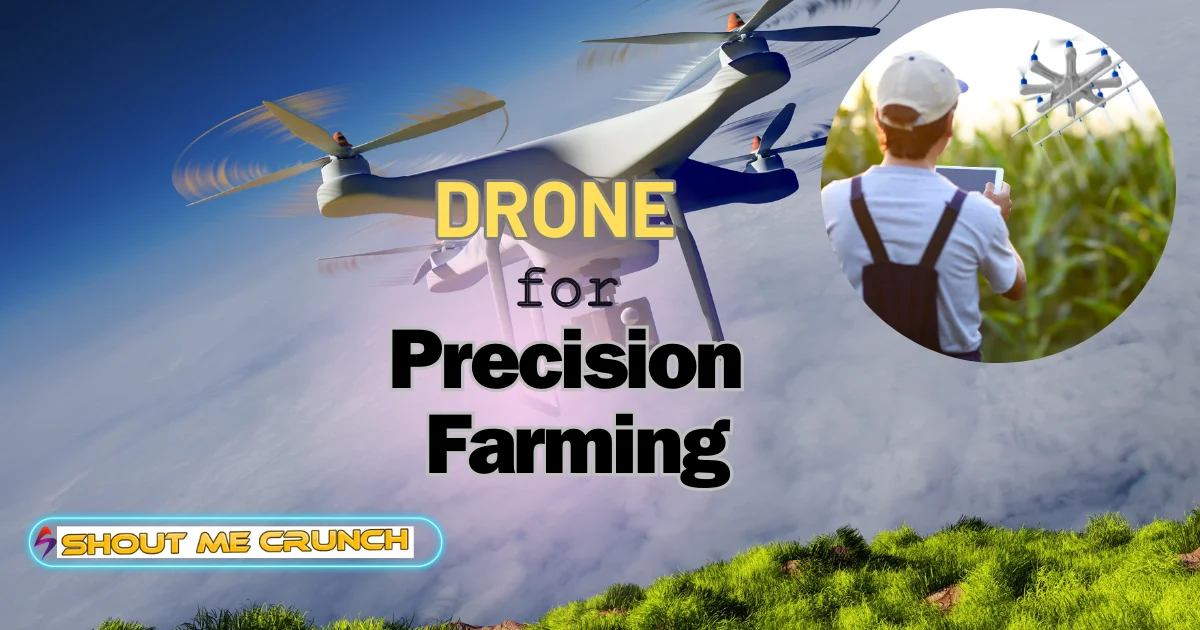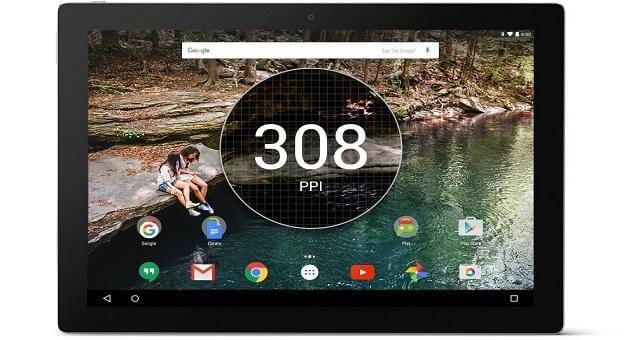In the broad, ever-changing environment of agriculture. Drone technology stands out as a light of innovation. That converts old farming methods into models of accuracy and efficiency. It makes the agriculture system easier. This extensive essay digs into how drone technology is transforming precision farming. This gives healthier crops and a brighter future for the agriculture sector.
How Are Drones Being Used in Farming?
Drones have emerged as effective instruments in the agriculture industry. This revolutionary fact describes how farmers manage their land and crops. These adaptable aerial platforms are employed for various purposes, significantly affecting farm operations. Drones are revolutionizing agricultural data gathering and analysis, from monitoring crop health.
It identifies insect infestations using high-resolution aerial imagery, maps fields and builds models for optimal irrigation and resource allocation. That is a sector of intelligent technology. It is used for precise pesticide and fertilizer application, reducing waste and environmental impact, herding cattle, and monitoring animal health in large fields.
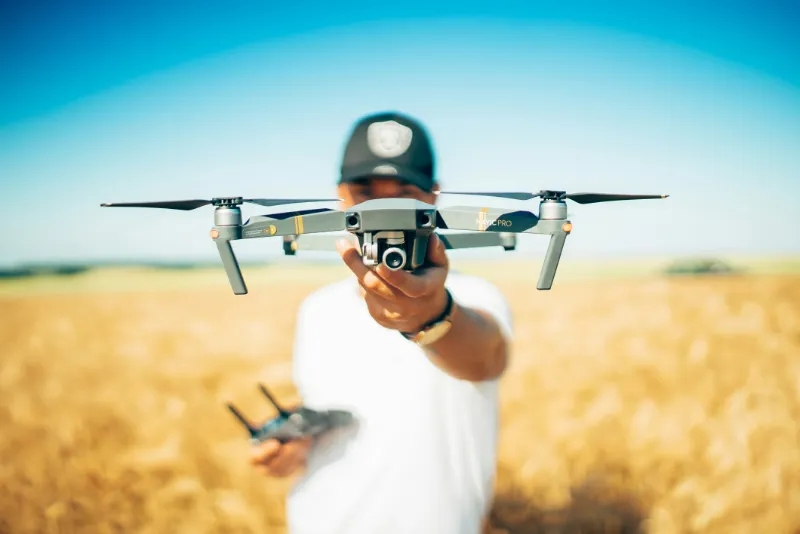
Hence, it increases efficiency and safety. As drone technology advances, its agricultural uses will likely become increasingly diversified and sophisticated. They are influencing the future of sustainable and data-driven farming techniques.
What Are Drones Being Used for Today?
Drones are no longer limited to amateurs and videographers. Now, the use of drones is everywhere. It involves agricultural tools, changing how the owners manage their land. This is a beneficial technology at present. These flying vehicles outfitted with high-resolution cameras and specialized sensors, collect extensive information on crops and cattle. Farmers use this data to:
Crop health monitoring:
Drones capture high-resolution photos. That helps farmers to detect pest infestations, illnesses, and nutritional deficits early on. It quickly indicates the position of insects. This allows them to take focused action, reducing damage and maximizing resource utilization.
Optimize irrigation:
By recording thermal images, drones may identify sections of the field. That requires different amounts of water. It enables more precise irrigation procedures, which saves water and increases agricultural output. For this, farmers understand the situation of crops and use pesticides properly.
Improve livestock management:
Drones can be used to count and monitor the health of animal herds. That eliminates the need for physical checks in big fields or rugged terrain. You can take care of them from any other place. This results in better animal care and more efficient management.
These are just a few examples of how drones transform agriculture by making it more precise, efficient, and sustainable.
Understanding Precision Farming
Precision farming is another name for precision farming. This method uses computers and many tools, like GPS guidance, control systems, sensors, robots, drones, self-driving cars, variable rate technology, and GPS-based soil sampling, to improve crop management at the field level. That has brought a revolutionary change in our agricultural sector.
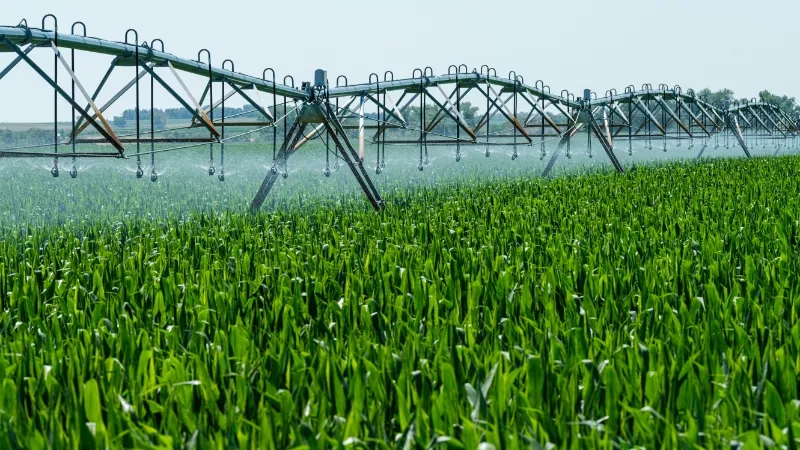
In addition, it helps make sure that the farming system works well. Precision farming is all about making crop and animal output more accurate and under your control. This plan allows farmers and growers to use their resources better, boost production, cut costs, protect the environment, and grow healthier crops. To try this, you can buy a drone. That’s why you should know this.
What are the Advantages of Drones in Farming?
Drones, also known as uncrewed aerial vehicles (UAVs), are leading the precision farming revolution. They provide a bird’s-eye view of the land, revealing vital information. This is a fantastic view. That was previously difficult, if possible, to access. Drones with robust sensors and imaging capabilities can survey and map fields with surprising accuracy. That highlights the overall condition of crops. It gives farmers extensive information about the health and vitality of their crops, soil conditions, and more.
Enhancing Crop Health Monitoring
One of the most significant advantages of drone technology in agriculture is its capacity to monitor crop health with unparalleled accuracy. Drones can utilize multispectral imagery to acquire data on how plants absorb and reflect light. It upholds a very tiny part of the crop on a big screen. This information helps detect disease, pest infestations, and nutrient deficits early on. Farmers can take focused action to alleviate problems before they increase. So, it gives better crops and fewer broad-spectrum pesticide applications.
Optimizing Water Use
Water management is a crucial feature of farming, particularly in drought-prone areas. Drones with thermal cameras can detect parts of a field that are either too dry or receive too much water. That is useful to understand the importance of the water. This allows farmers to adapt their irrigation systems to supply water more efficiently. It ensures that crops receive the correct quantity of moisture to grow. Thus, you can succeed in agriculture. This conserves water and reduces water stress on the plants, resulting in a stronger yield.
Improving Soil Analysis
Soil health is the cornerstone of successful farming. Agriculture Drones from Talos Drones can collect soil samples. More typically, to create precise maps of soil composition and variation across a field. That helps you to improve your crops. This knowledge enables farmers to tailor their soil management strategies, such as fertilization and irrigation, to the unique demands of each area. Farmers may improve soil health and encourage plant growth. They increase crop yields, addressing the specific needs of each region of their field. You should explore your idea with your local.
Facilitating Precision Planting
Drones also play an essential part in planting. Some drones can spray seed pods straight into the soil at predefined locations and depths. That helps to manage your time. This precision planting technique can enhance seed placement accuracy, reduce waste, and optimize plant spacing. You may get your crops within a short time. Better spacing helps each plant have appropriate air circulation and sunshine exposure, lowering disease risk and fostering health. It supports more uniform crop growth.
Streamlined Crop Spraying
Traditional crop spraying methods could be more efficient and reliable. For this reason, it bears excessive fertilizer and pesticide consumption. Drones outfitted for aerial spraying can distribute these compounds with pinpoint accuracy. It can focus on specific areas that require treatment. For this, it plays an essential role in agriculture. This reduces the amount of chemicals utilized and minimizes the environmental impact and workers’ exposure to hazardous compounds.
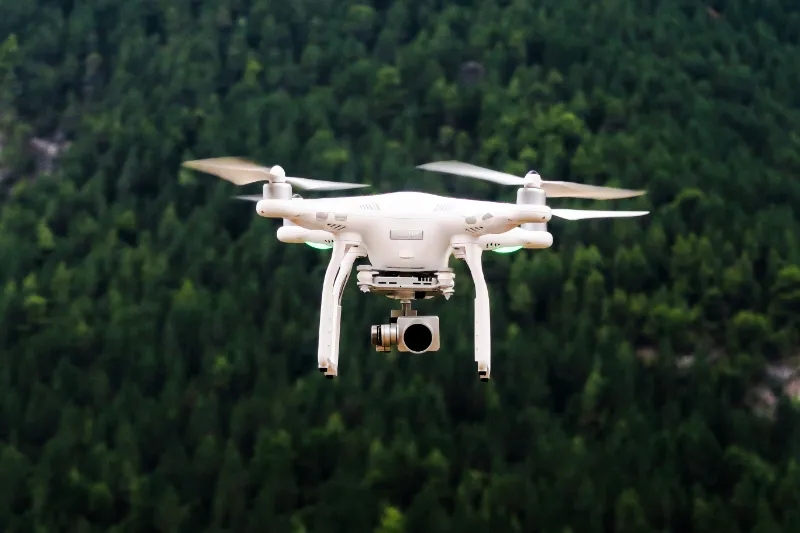
Yield Prediction and Harvest Optimization
Drones capture massive amounts of data, which, when analyzed, can provide useful insights into crop development and yield prediction. It increases the quantity of crops. This information allows farmers to make more educated decisions about harvest timing and logistics. That ensures crops are picking at their prime. Accurate yield projections can aid in market planning and result in more steady incomes for farmers.
The Future of Drone Technology in Agriculture
As drone technology advances, its uses in precision farming are expected to expand. Future developments could include more sophisticated sensors for detecting a broader range of crop health indicators and autonomous drones capable of performing tasks without human intervention. Integrating drone data is used with other intelligent farming technologies to improve agricultural practices.
Challenges and Considerations
Despite its enormous potential, drone technology in precision farming confronts numerous hurdles. These include legislative barriers, the requirement for technical expertise to operate drones and analysis data, and the initial investment required to buy and maintain drone technology. Sometimes, it bears so many costs. However, as technology progresses and becomes more available, these obstacles are expected to be reduced, paving the door for widespread adoption. Then, you can easily use drones for your crops.
Conclusion
Drone technology is creating a new standard in precision farming by providing solutions that improve crop health, optimize resource utilization, and increase yield outcomes. That makes a revolutionary change in agriculture.
Drones are helping to make agriculture more sustainable, efficient, and productive by offering precise insights into crop and soil conditions and facilitating targeted interventions. It allows for more informed decision-making. We continue to welcome these advancements. So, when you arrive on time, you should explore your ideas with people.
